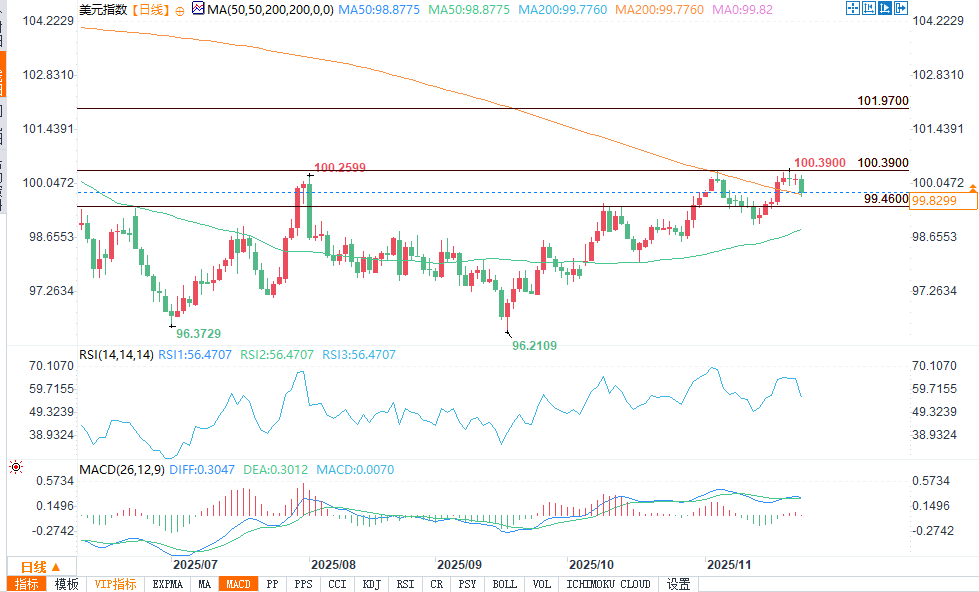US Dollar Index Outlook: Weak employment data drags DXY below 200-day moving average
2025-11-26 00:36:59

On the downside, the next support level is the 50% retracement level at 99.693, where support is weak. If sellers continue to exert pressure, the low of 98.991 and the 50-day moving average near 98.878 will become key support levels. If the US dollar index can recover the 200-day moving average, it may mean that the current decline is more due to long position liquidation than a large influx of new short positions; however, even so, a break above 100.395 is needed to attract aggressive buying back into the market.
A cooling job market triggers a rise in government bonds.
The yield on the 10-year U.S. Treasury note fell below 4.01%, dropping several basis points; the yield on longer-term Treasury bonds fell 3 basis points to 4.647%, while the yield on the 2-year Treasury note remained almost unchanged. The yield curve signals that traders are betting on a "soft landing" for the economy—at least in terms of pricing.
ADP private sector employment data shows that businesses laid off an average of 13,500 employees per week over the past month, a significant increase from 2,500 in the previous month. Consumer confidence also suffered: The Conference Board's November consumer confidence index came in at 88.7, the lowest level since April and well below the market consensus expectation of 93.2.
Inflationary pressures continue to ease
While the September Producer Price Index (PPI) data is outdated, it remains relevant. The core PPI rose 0.1% month-on-month, below the expected 0.2%, providing more policy justification for dovish camps. As Clark Belling of Bellwether Wealth stated, the data indicates that inflation is under control and the job market has clearly cooled, providing reasonable support for another rate cut in December.
Federal Reserve officials are divided, with the market leaning towards a dovish stance.

(US Dollar Index Daily Chart Source: FX678)
Federal funds rate futures indicate an 80% market pricing in an 25 basis point rate cut at the December 10 meeting. If the cut occurs, the target rate range would fall to 3.50%-3.75%. Federal Reserve officials, including Williams, Daly, and Waller, have all expressed a willingness to further ease monetary policy. Collins is the sole exception, opposing a near-term rate cut and calling the current policy stance "moderately restrictive" and "appropriately reasonable."
Summarize
The US dollar is currently under pressure, with economic data failing to provide effective support for the bulls. Weak employment data, sluggish consumer confidence, and moderate inflation all point to the possibility of another interest rate cut by the Federal Reserve. Until the market narrative shifts or buying recovers 100.395, the path of least resistance for the US dollar index remains downward.
- Risk Warning and Disclaimer
- The market involves risk, and trading may not be suitable for all investors. This article is for reference only and does not constitute personal investment advice, nor does it take into account certain users’ specific investment objectives, financial situation, or other needs. Any investment decisions made based on this information are at your own risk.





















